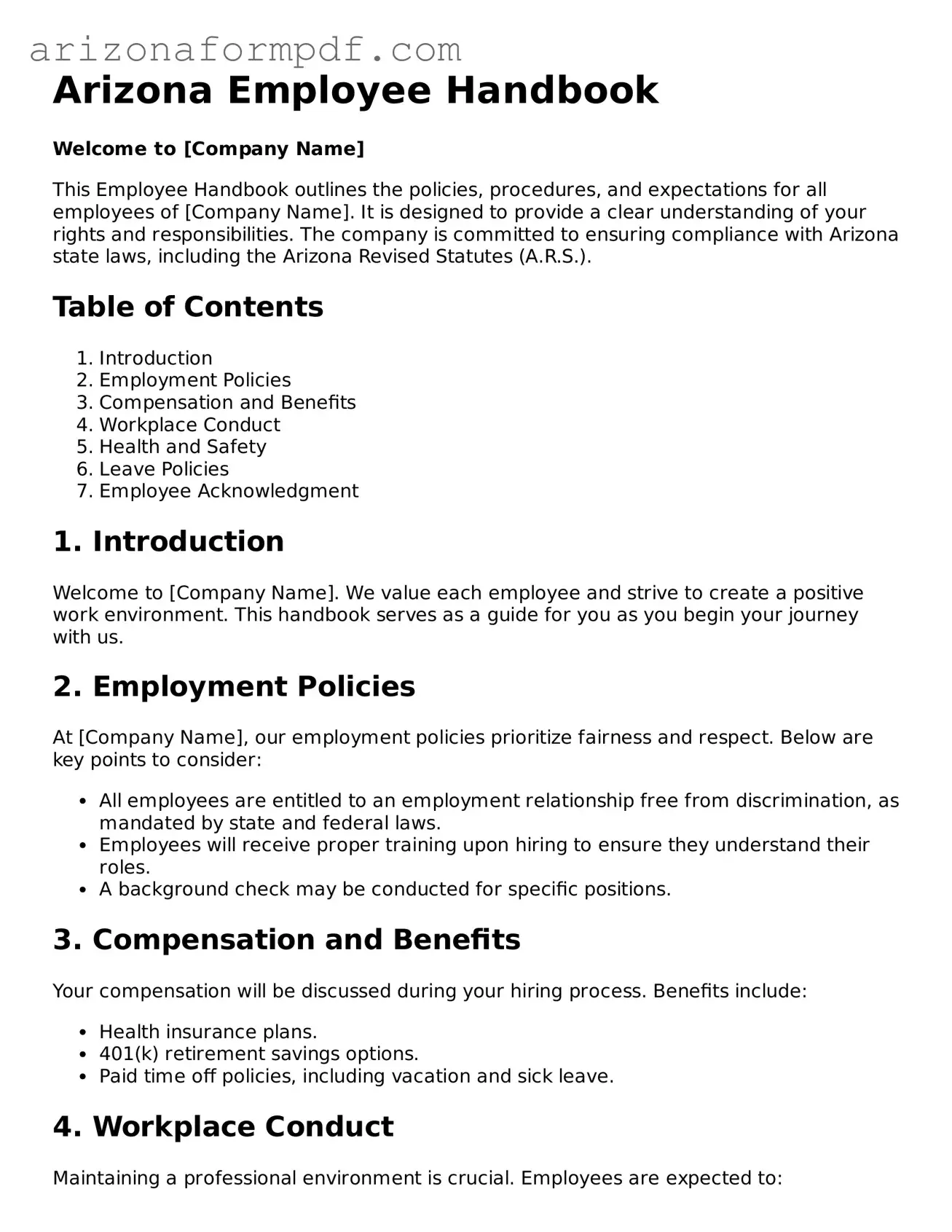What is the purpose of the Arizona Employee Handbook form?
The Arizona Employee Handbook form serves as a guide for employees, outlining company policies, procedures, and expectations. It helps ensure that employees understand their rights and responsibilities while promoting a positive workplace culture. This document can also protect the employer by clarifying rules and reducing the likelihood of misunderstandings.
Who needs to complete the Employee Handbook form?
All employees should receive and acknowledge the Employee Handbook form. This includes full-time, part-time, and temporary staff. By doing so, employees confirm that they have read and understood the policies outlined in the handbook.
What key topics are typically covered in the Employee Handbook?
The Employee Handbook usually includes sections on workplace conduct, attendance policies, benefits, compensation, anti-discrimination policies, and procedures for reporting grievances. It may also address safety protocols, confidentiality, and the process for disciplinary actions.
Is the Employee Handbook legally required in Arizona?
While Arizona law does not mandate that employers provide an Employee Handbook, having one is highly recommended. It can help establish clear expectations and provide legal protections for both the employer and employees. Employers may also be required to comply with federal regulations that necessitate certain policies, which can be included in the handbook.
How often should the Employee Handbook be updated?
Employers should review and update the Employee Handbook regularly, ideally at least once a year. Changes in laws, company policies, or workplace practices may necessitate updates. Keeping the handbook current helps ensure compliance and maintains clarity for employees.
What should an employee do if they have questions about the Employee Handbook?
Employees should feel encouraged to ask questions if they have concerns or need clarification about the Employee Handbook. They can approach their supervisor or the human resources department for assistance. Open communication is essential for fostering a positive work environment.
Can an employer change the policies in the Employee Handbook?
Yes, employers can change the policies outlined in the Employee Handbook. However, it is important to communicate any changes to employees promptly. Employers should also consider providing a revised copy of the handbook and obtaining acknowledgment from employees regarding the updates.
What happens if an employee violates a policy in the Employee Handbook?
If an employee violates a policy, the employer typically follows a disciplinary process as outlined in the handbook. This may involve verbal warnings, written warnings, or more serious consequences, depending on the nature of the violation. Consistency in enforcement is key to maintaining fairness in the workplace.
How can employees acknowledge receipt of the Employee Handbook?
Employees can acknowledge receipt of the Employee Handbook through a signature on a designated form or an electronic acknowledgment if the handbook is distributed digitally. This acknowledgment serves as proof that the employee has received and understands the policies contained within the handbook.
